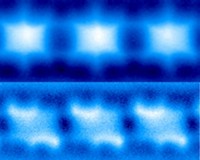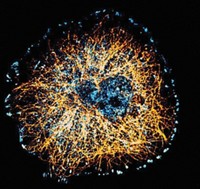Advertisement
Grab your lab coat. Let's get started
Welcome!
Welcome!
Create an account below to get 6 C&EN articles per month, receive newsletters and more - all free.
It seems this is your first time logging in online. Please enter the following information to continue.
As an ACS member you automatically get access to this site. All we need is few more details to create your reading experience.
Not you? Sign in with a different account.
Not you? Sign in with a different account.
ERROR 1
ERROR 1
ERROR 2
ERROR 2
ERROR 2
ERROR 2
ERROR 2
Password and Confirm password must match.
If you have an ACS member number, please enter it here so we can link this account to your membership. (optional)
ERROR 2
ACS values your privacy. By submitting your information, you are gaining access to C&EN and subscribing to our weekly newsletter. We use the information you provide to make your reading experience better, and we will never sell your data to third party members.
Nanomaterials
Chemistry In Pictures
Chemistry in Pictures: Diaphanous dancers
by Manny I. Fox Morone
January 12, 2021

Stanislav Tsitkov wants to understand how small things move and come together, so he created a system to watch the dance of these microtubules. In cells, microtubules act as the rails on which cargo is shuttled by motor proteins such as kinesins, which use their ‘feet’ to march up and down the trails set up by the microtubule network. But in this experiment, Tsitkov, a postdoc in Henry Hess’s lab at Columbia University, allowed the tubules to float freely and interact with modified kinesins that could anchor their ‘heads’ to the surface under the system. The swarm of kinesin motors bridge the gap between the surface and the tubules and essentially allow the tubules to crowd-surf: one anchored kinesin grabs a floating tubule and hands it to the next kinesin and so on, drawing the tubules into these long twisting curls.
Credit: Stanislav Tsitkov. Follow the Hess Lab on Twitter @HessLabColumbia. Read the paper: ACS Nano 2020, DOI: 10.1021/acsnano.0c03263
Do science. Take pictures. Win money. Enter our photo contest here.




Join the conversation
Contact the reporter
Submit a Letter to the Editor for publication
Engage with us on Twitter